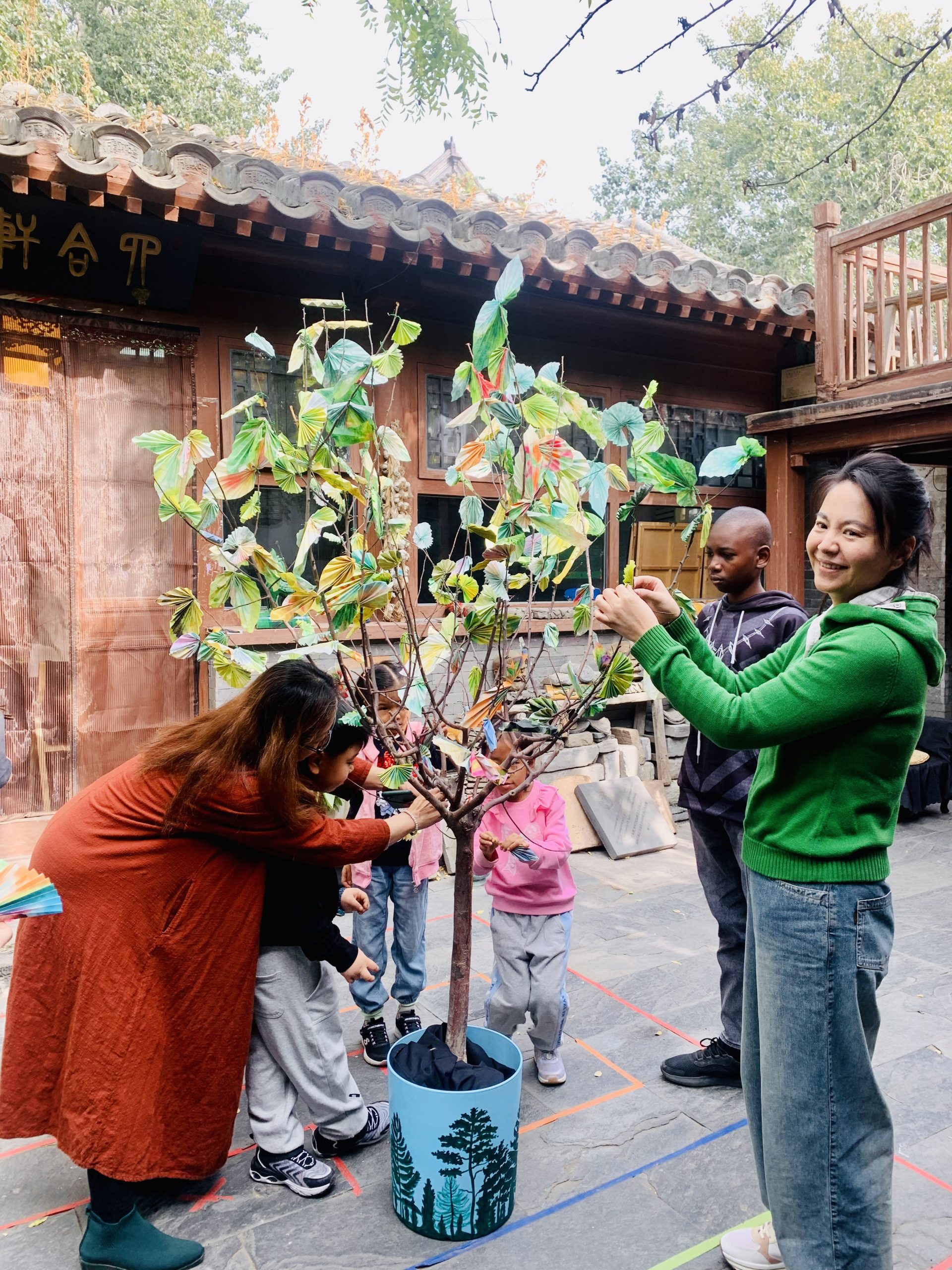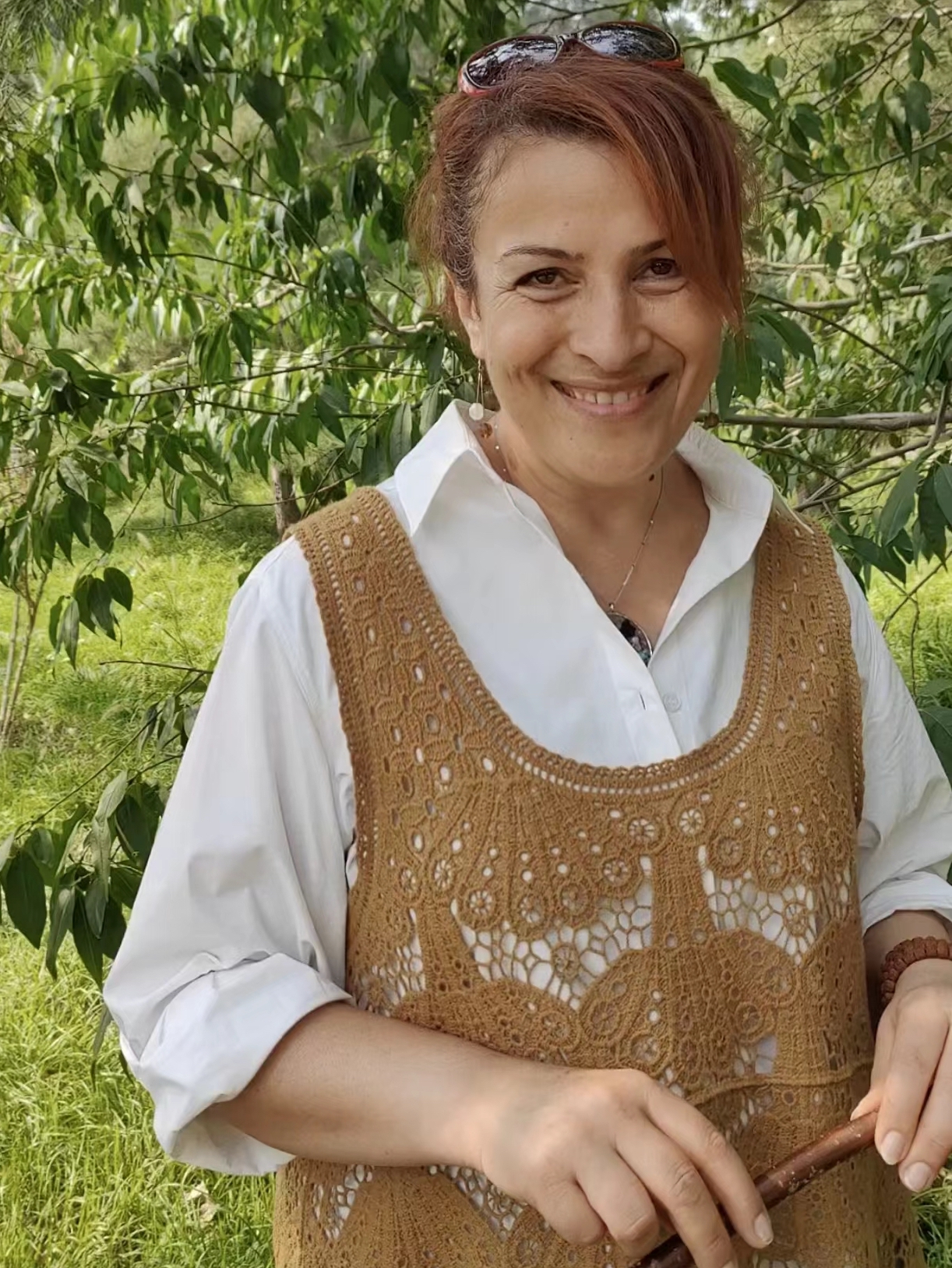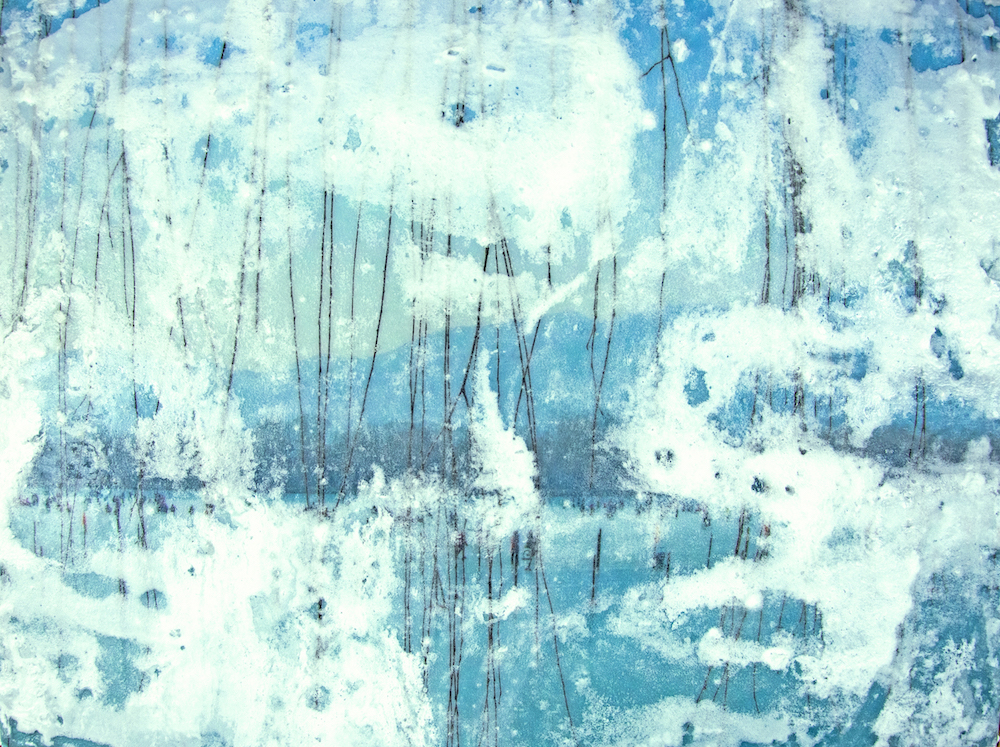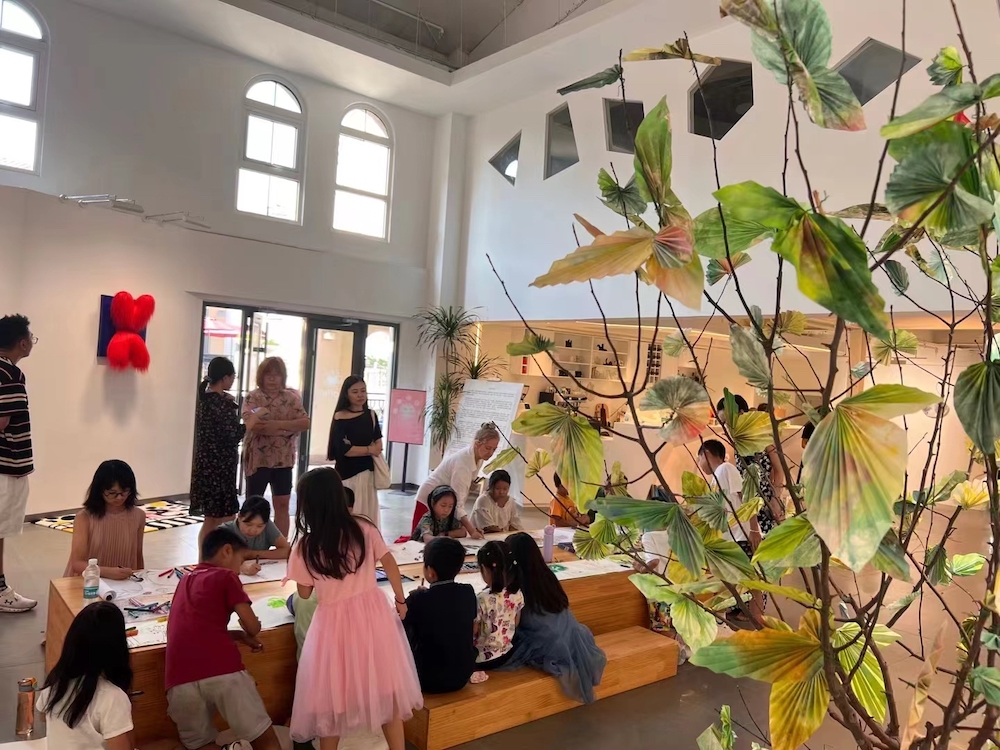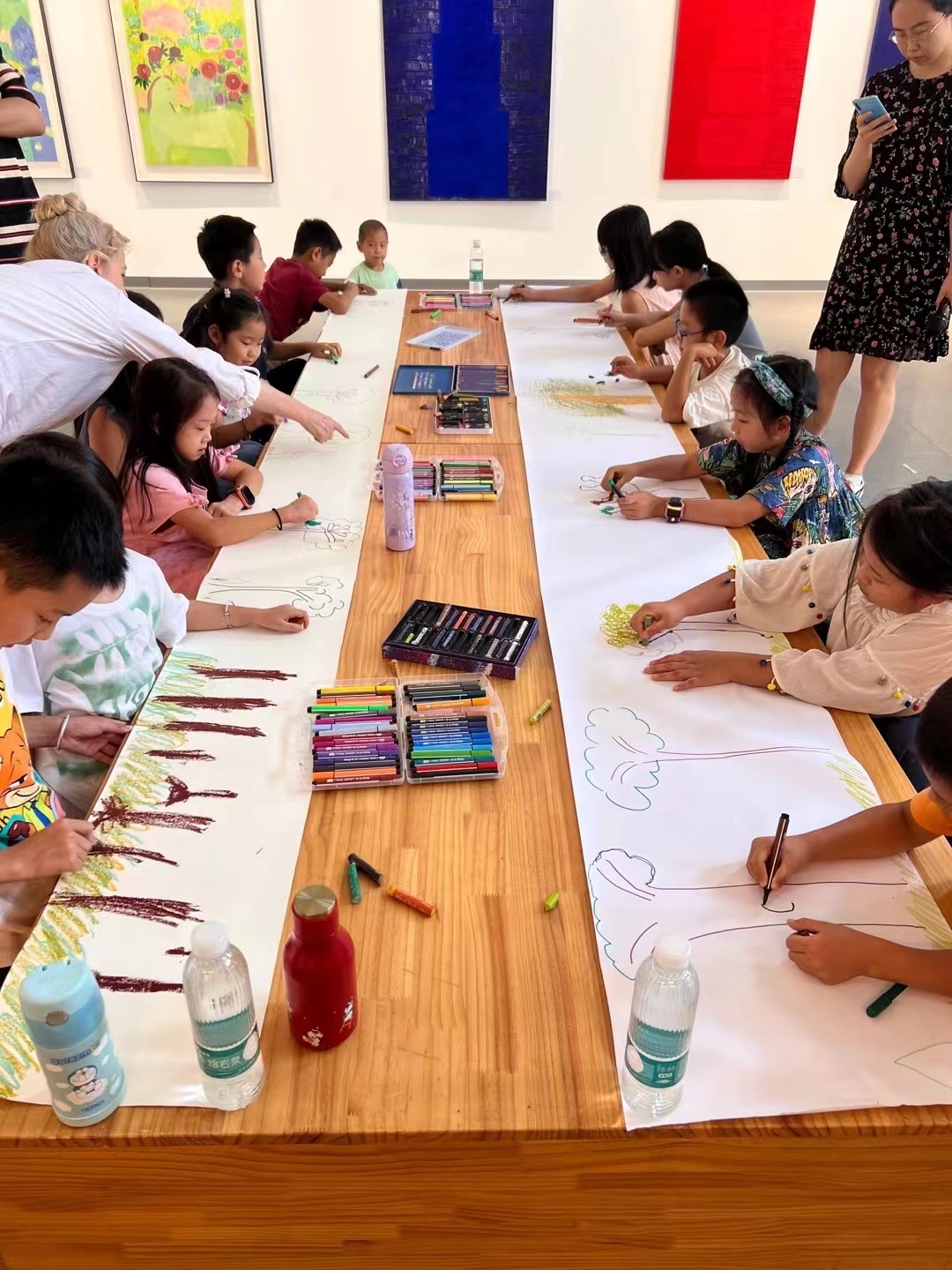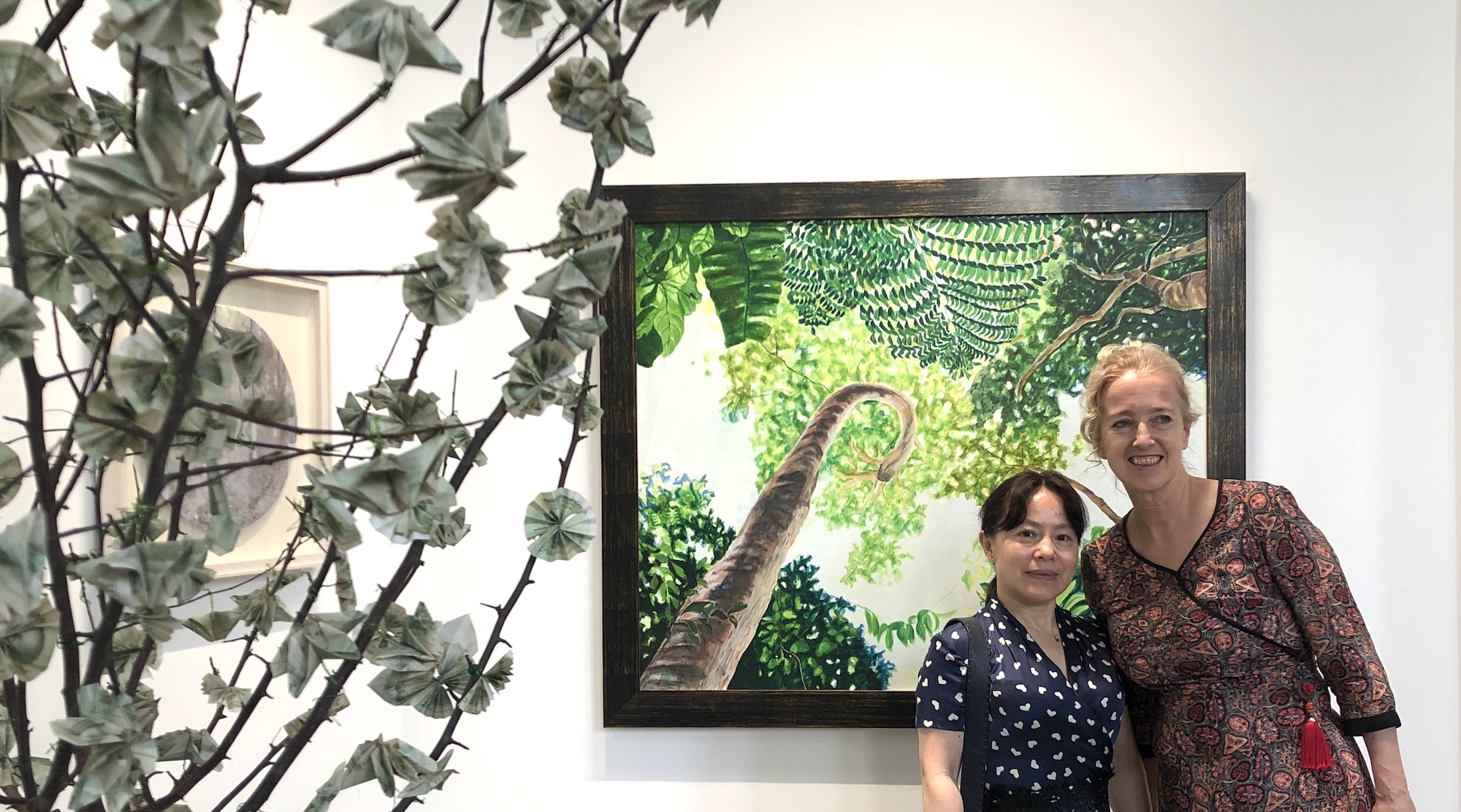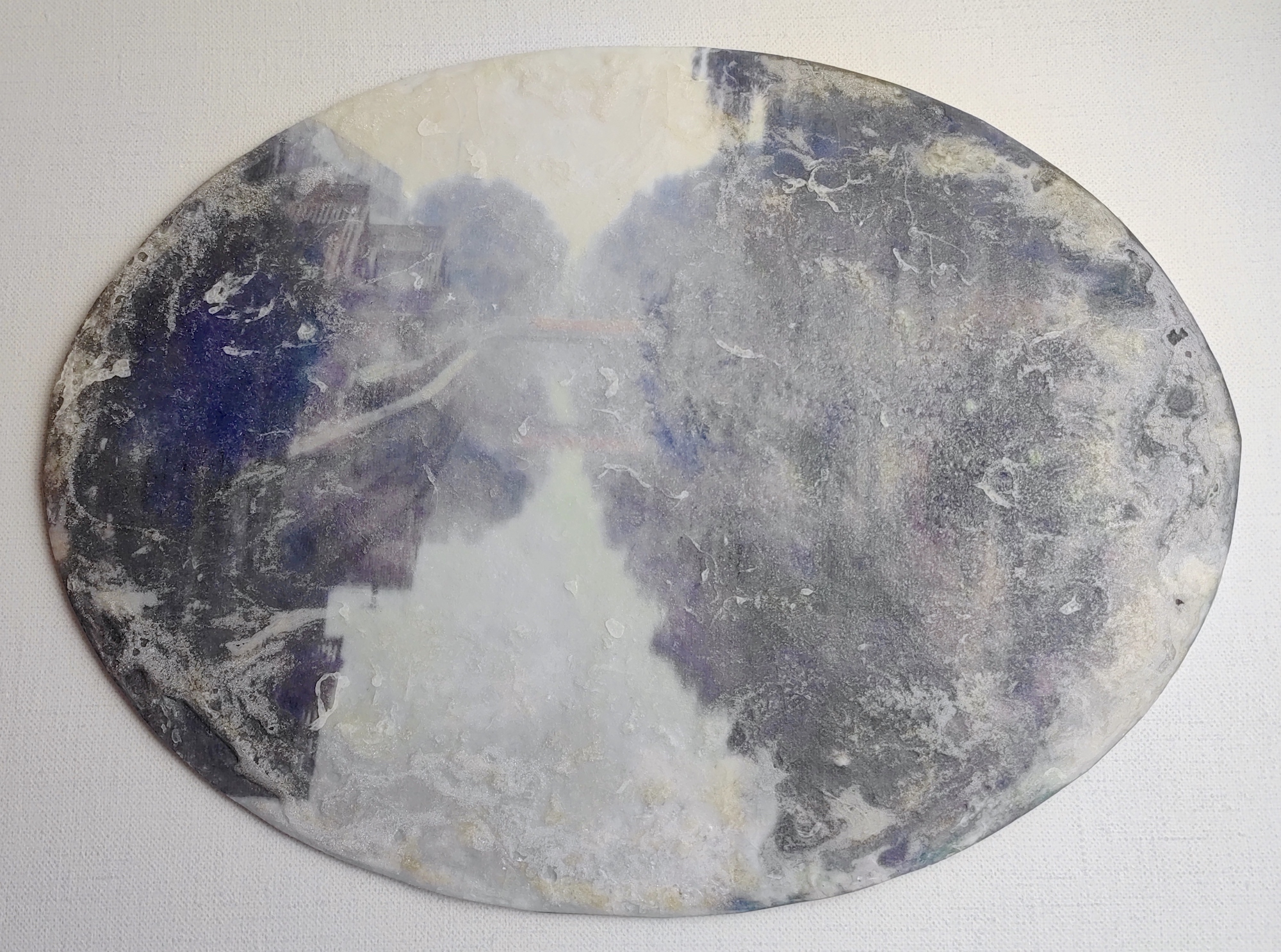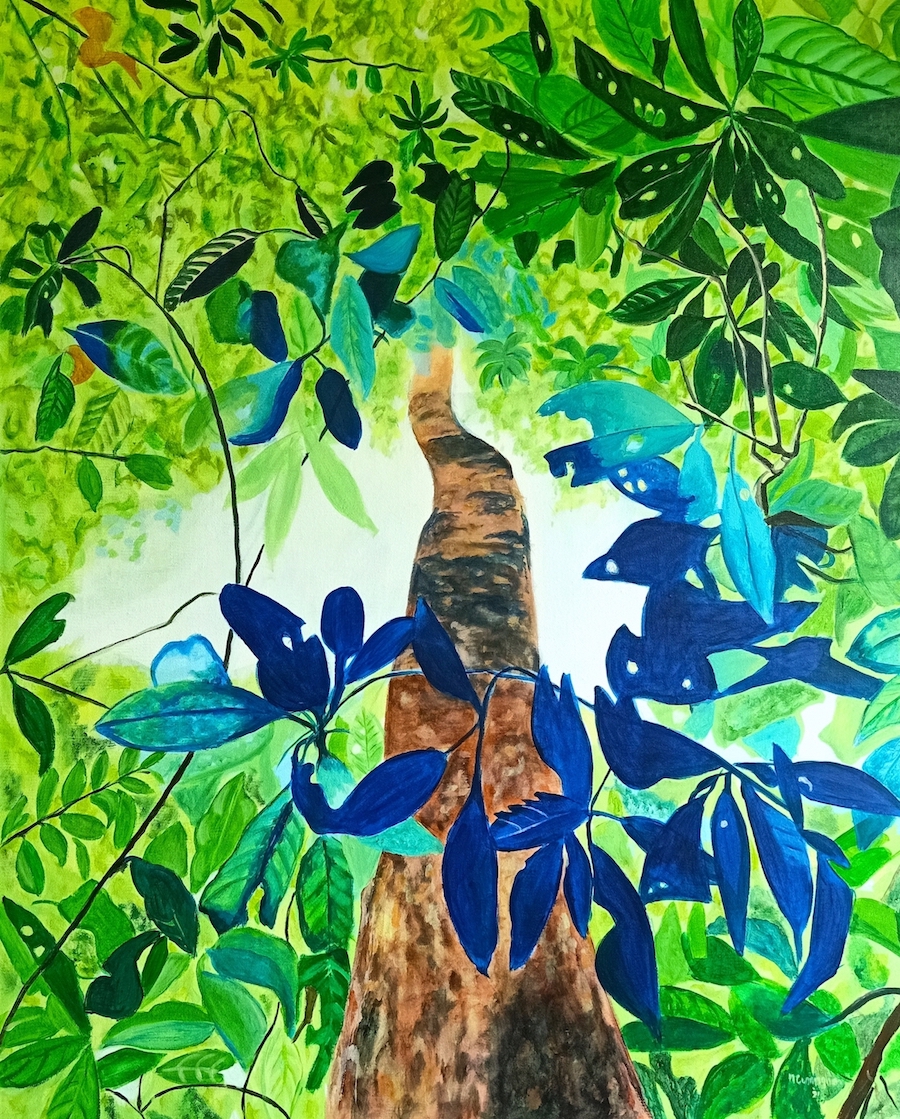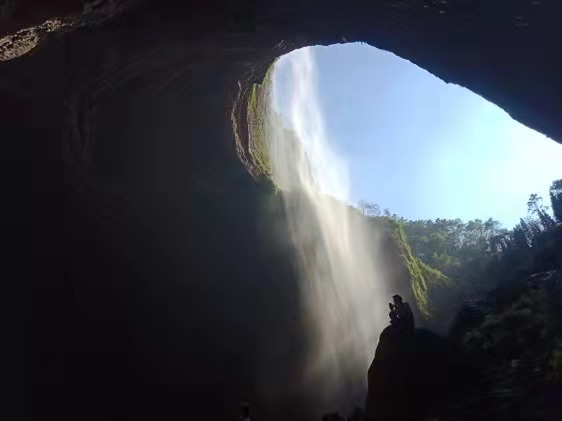The Gathering for treestory tellers on Sunday 28th Jan.2024 was very special with almost 60 people in attendance. A huge thank you to Sister Mary Carmody and all at Carlow’s Community Garden ‘An Gairdin Beo’ (Ireland) for the use of the communuty hall and their continued support. The screenings included a wide range of stories ranging from the very rare Wollemi Pine to a joyful tree song from Yunnan to a very funny tree climbing gorilla. After the screenings there was no need to facilitate tree story speed dating, everyone was curious and jumped straight into meeting and chatting with other treestory tellers. They had found their tribe. After the break we had a few words introducing The Earth Charter by Dr Cathy Fitzgearld. Also there was videographer Patrick Bramley who shared the experience of trying to entice people to tell a tree story at different events at Carlow’s Garden Festival Summer 2023 . The open discussion included ideas and information from tree planters foresters, farmers and gardeners.
Category Archives: Eco Art
Stone Forest Sky and The Meeting Point showing till end of 2023 in Jinghong State Art Museum
“古树新生”家庭艺术工作坊-在北京四合书院
上周六10月15日,在北京四合书院“古树新生”家庭艺术工作坊度过了愉快的一上午。这是之前“种树”工作坊的新的演绎,探索有关树木的有趣事实和老北京的古树。
这次工作坊由三方共同合作,四合书院、戏剧导演梁丹丹和我本人。
#11 Protective Peach -Tree Story
Delighted to learn from Ayse Emel Gümüs about the protective traditions associated with peach tree wood in both China and Turkey . We went searching for peach trees at Yuyuantan park last week.
#10 Forest Breath – Tree Story
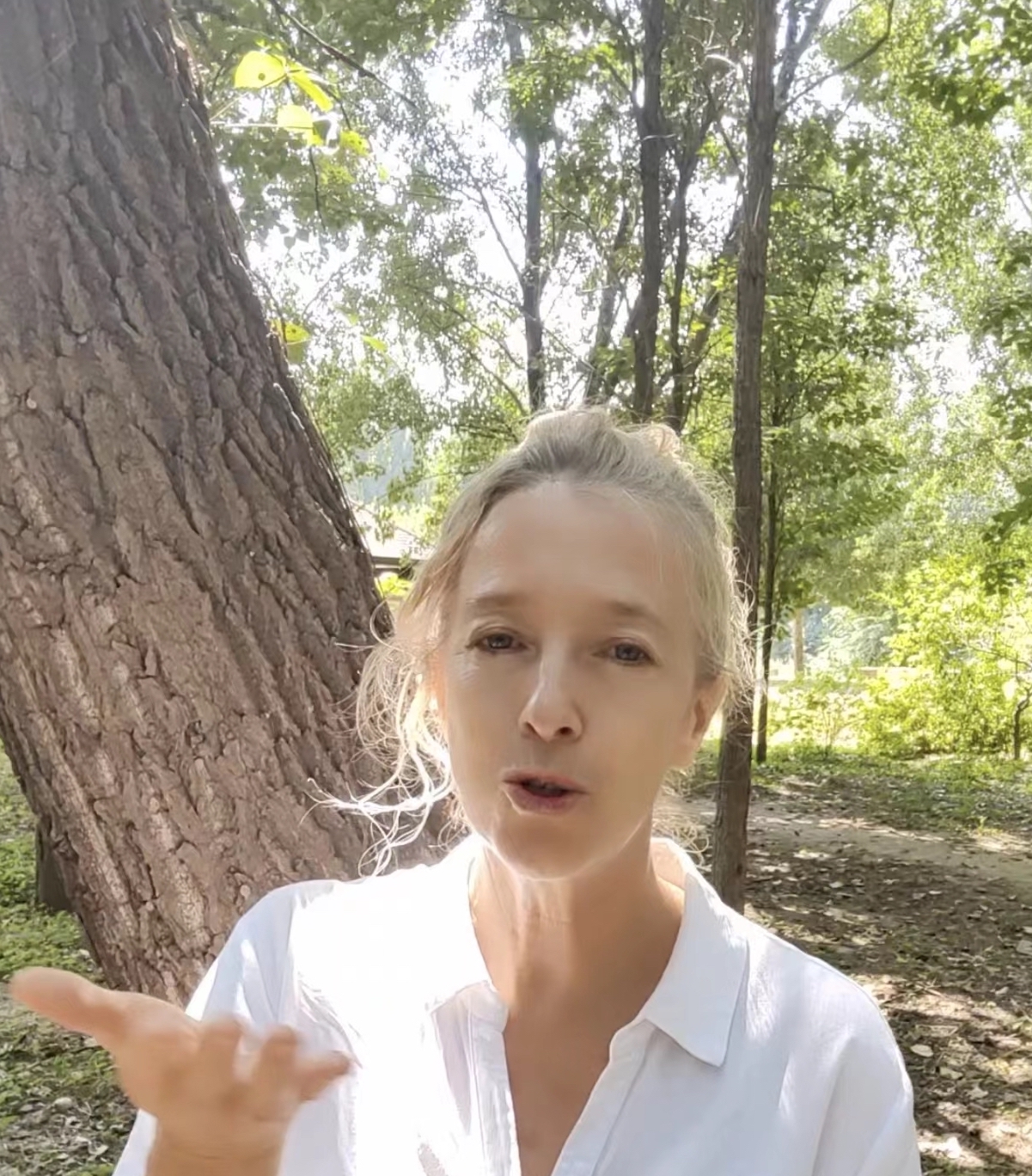
简体中文
I first encountered the “Forest Breath” concept when reading David Haskell’s book “Songs of Trees”. He was discussing the Formosa Pine and I thought it a fascinating perception that “air is 400 millions years of forest breath”.
You might wonder how many times is it possible for an oxygen atom to be recycled after numerous binding and cleaving, before it gets ” too old” or if even there is such a thing as an atom getting old?
Nevertheless , these basic atoms pass in and out of different life forms as life evolved on earth. Where will the balance of this gas exchange lie as the globes forests continue to be decimated at break neck speed .
******
Open Call for your tree story on video
Memory Palace of Trees is socio- ecological art practice which invites your participation to tell a story (or give some kind of information) about trees. It is a social enquiry of how to live better with the planet and with people by sharing tree stories.
Memory Palace of Trees will continue throughout 2022. The submissions are video format. If you have a story you can tell in less than a minute , please find your favorite tree and video yourself on your phone telling the story. I can help with adding the English or Chinese subtitles. Please ensure the sound quality of your recording is clear as possible . If you have any questions about this please ask . Also, If you are in Beijing I can meet up with you and assist in the filming .
Looking forward to hearing from you.I can be contacted directly on this platform.
Video 1: Empty Tendrils by Yvette Stride
Video 2:Pomegranate Tree by Han Chao
Video 3:Trees are Like Humans by Jenny Hong
Video 4:Old Ash A real survivor by Gillian Cussen
Video 5:Tree Rings of Life by Wang Ligeng
Video 6:A very Weird Elf by Zhu Jinghua
Video 7:Old Crabapple of Wenhua Dian by Matthew Hu
Video 8: Standing Fast by Joseph Stewart
Video 9: Feeling Good – Tree Song by Nam
I am currently gathering tree stories in the format of one minute videos. In January 2020 I collected stories in written format .
Most of these are personal stories. Submissions came from a range of different people in the US, Europe, Australia and Asia including a children’s writer, poets, dendrologists, artists, a dancer, a forester, an ant forest app user, photographers, academics and more.
See further down this page for these links.
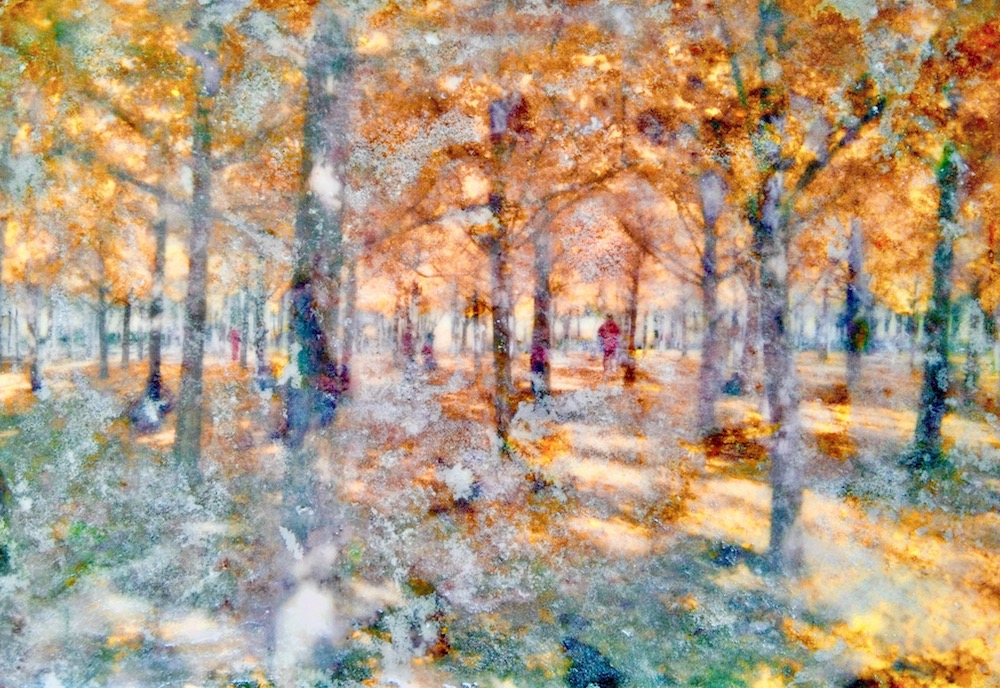 Gingko Palace Sucrose Series 83 x 120 cm print on Aluminium Niamh Cunningham 2020 (week 15)
Gingko Palace Sucrose Series 83 x 120 cm print on Aluminium Niamh Cunningham 2020 (week 15)
The Second Beech Niamh Cunningham 倪芙瑞莲2020 (week 17 of the Memory Palace of Trees)
Throughout 2020 different peoples tree stories were gathered from various people writers , artists, foresters , poets, and other people .
Ice Willow , Sucrose 8.7.2020 Print on Aluminium , Niamh Cunningham -Kosimas Willow Story
Memory Palace of Tree Stories began in January 2020. Throughout 2020 different peoples tree stories were gathered from various people writers , artists, foresters , poets, and other people .
- WEEK 2: WHY TREES WHISPER
- WEEK 3: THE KING HAS DONKEY’S EARS
- WEEK 4: WHY DO TRAFFIC POLICE LIKE TREES?
- WEEK 5: THE HEADACHE TREE
- WEEK 6: ON THE STROLL TO WORK
- WEEK 7: THE ANCIENT GINKGO TO WUHAN NO 5 HOSPITAL
- WEEK 8: THE TREE IN YOUR BACKYARD
- WEEK 9: OF TREES AND ME
- WEEK 10: FROZEN FRUIT
- WEEK 11: OF BAMBOO AND BIRDS
- WEEK 12: PARK TREE
- WEEK 13: TREES CAN COMMUNICATE
- WEEK 14: ELVES OF THE PLATEAU AND CORRIDOR FORESTS
- WEEK 15: ROOTS OF RECOVERY
- WEEK 16: SWAN GOOSE FOREST
- WEEK 17: THE BEECH TREE AND THE ACCIDENTAL ACADEMIC
- WEEK 18: GINKGO SOLITARY AND UNIQUE
- WEEK 19: THE TREE THAT OWNS ITSELF
- WEEK 20: BLUED TREES SYMPHONY
- WEEK 21: LIGUSTRUM LEAVES
- JUNE 2020: TREE CLIMBER
- JULY 2020: EMOJI TREES
- AUGUST 2020: THE HAWTHORNE TREE
- SEPTEMBER 2020: KOSIMA’S CORKSCREW WILLOW
- OCTOBER 2020: KAMPONG COCONUTS
- NOVEMBER 2020: DANCES WITH TREES
- DECEMBER 2020: ANT FOREST -PUSHING BACK THE DESERT
Chestnut – Park Tree Sucrose Series original Sucrose 50 x 50 cm Niamh Cunningham 2020 (week 12)
Open Call for your tree story on video
Memory Palace of Trees will continue in 2022. This year the submissions will be in video format. If you have a story you can tell in less than a minute (less than 60 seconds), please find your favorite tree sit under it and video yourself on your phone telling the story. I can help with the editing and add the English or Chinese subtitles. Please ensure the sound quality of your recording is clear. If you are in Beijing I can come and video you if you wish. Please ask if you have any questions about this.
Looking forward to hearing from you. Please email me at niamh@niamhcunningham.com
 Jinan Tree Song Sucrose Series, print on aluminium 158 x 120cm Niamh Cunningham 2020
Jinan Tree Song Sucrose Series, print on aluminium 158 x 120cm Niamh Cunningham 2020
Here is a one minute video clip for the November 2020 tree story .
Ladybird of DongXiaokou (6 min 40 secs) video Niamh Cunningham 2020 Dancer: Zhang Yi , Music Credit: Ciorras
Overview of Memory Palace of Tree Stories
Tree Planter Workshop – FOR 觅 Gallery
Saturday August 20th was a joy ! We had the first “Tree Planter workshop” for a range of young learners at For 觅 Gallery at Grasse Town, Tongzhou.
We discovered some information about the resilience of the Gingko leaf having withstood polluted air erupting from volcanoes at the time of the dinosaurs, these trees are now often a choice for town planners all over the world for city roads. We learned how it was propagated first in China over a thousand years ago then spread throughout Asia and the rest of the world .
 Other origami leaves we made included the pear leaf and a double leaf.
Other origami leaves we made included the pear leaf and a double leaf.
Some young people were very adventurous and tried versions of their own design. The dead crabapple tree ( donated by the Beijing Forestry association ) was brought back to life with a variety of leaves.
 The second part of the workshop “My Forest” was a collaborative construction of various kinds of trees , we learned how monoculture of the same tree type cannot support biodiversity of other plants and insects . “My Forest” was packed with various trees of all types with strange insects and surprising animals. We also looked at the idea that oxygen gets recycled again and again and the possibility of the air that we breathe is 4 million years of Forest Breath .
The second part of the workshop “My Forest” was a collaborative construction of various kinds of trees , we learned how monoculture of the same tree type cannot support biodiversity of other plants and insects . “My Forest” was packed with various trees of all types with strange insects and surprising animals. We also looked at the idea that oxygen gets recycled again and again and the possibility of the air that we breathe is 4 million years of Forest Breath .
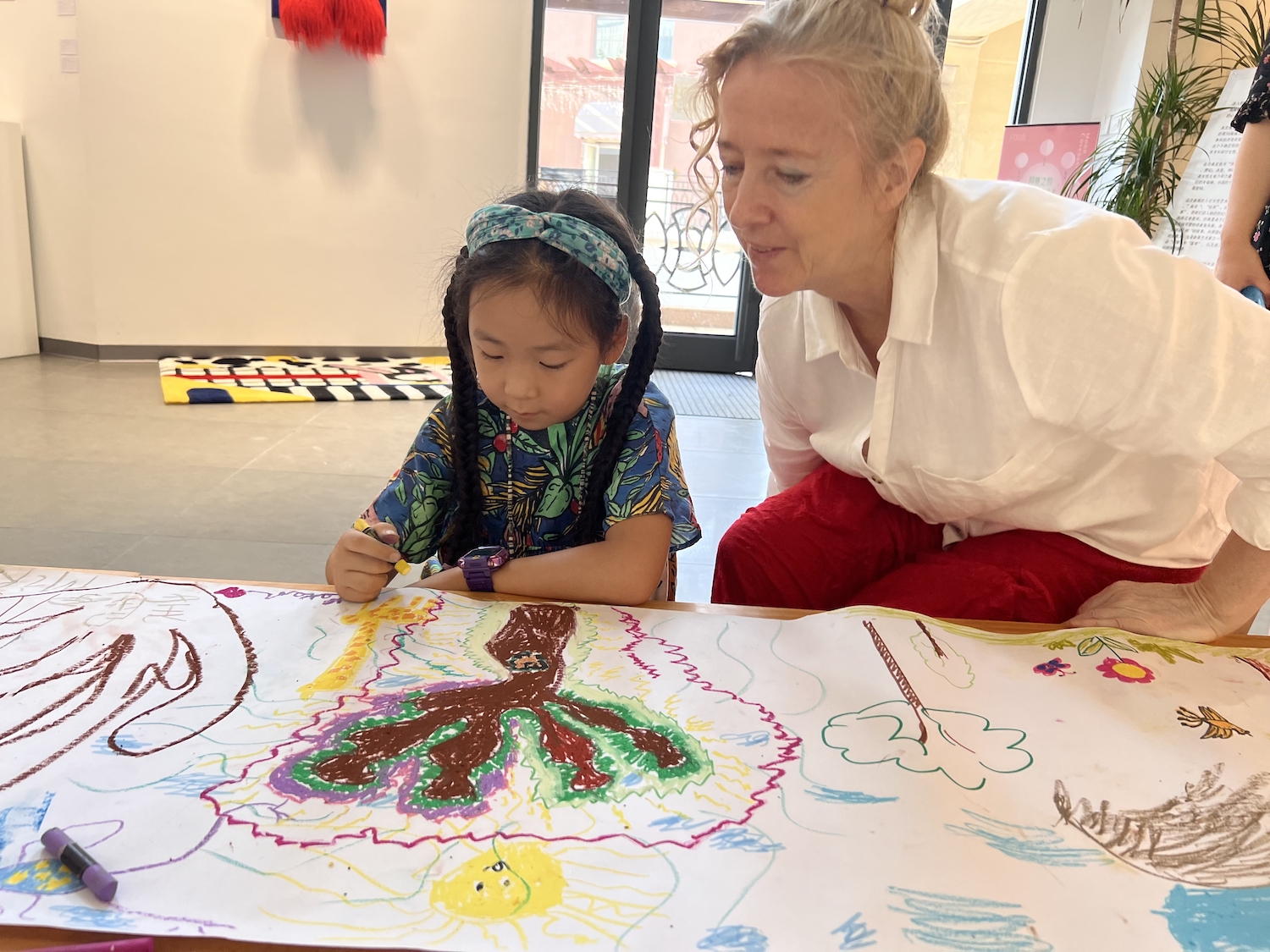 The energy of being in a room full of young people concentrating on their work was invigorating, the diversity of paths they choose matched the diversity in the forest they made. Some children thought they had finished early and walked away but came back for another 20 minutes of work. There is a joy in being with people when they create new and unexpected things , when they discuss what they want to do and their decisions, whether they are young learners or seasoned professors , it always feels like a special moment.
The energy of being in a room full of young people concentrating on their work was invigorating, the diversity of paths they choose matched the diversity in the forest they made. Some children thought they had finished early and walked away but came back for another 20 minutes of work. There is a joy in being with people when they create new and unexpected things , when they discuss what they want to do and their decisions, whether they are young learners or seasoned professors , it always feels like a special moment.
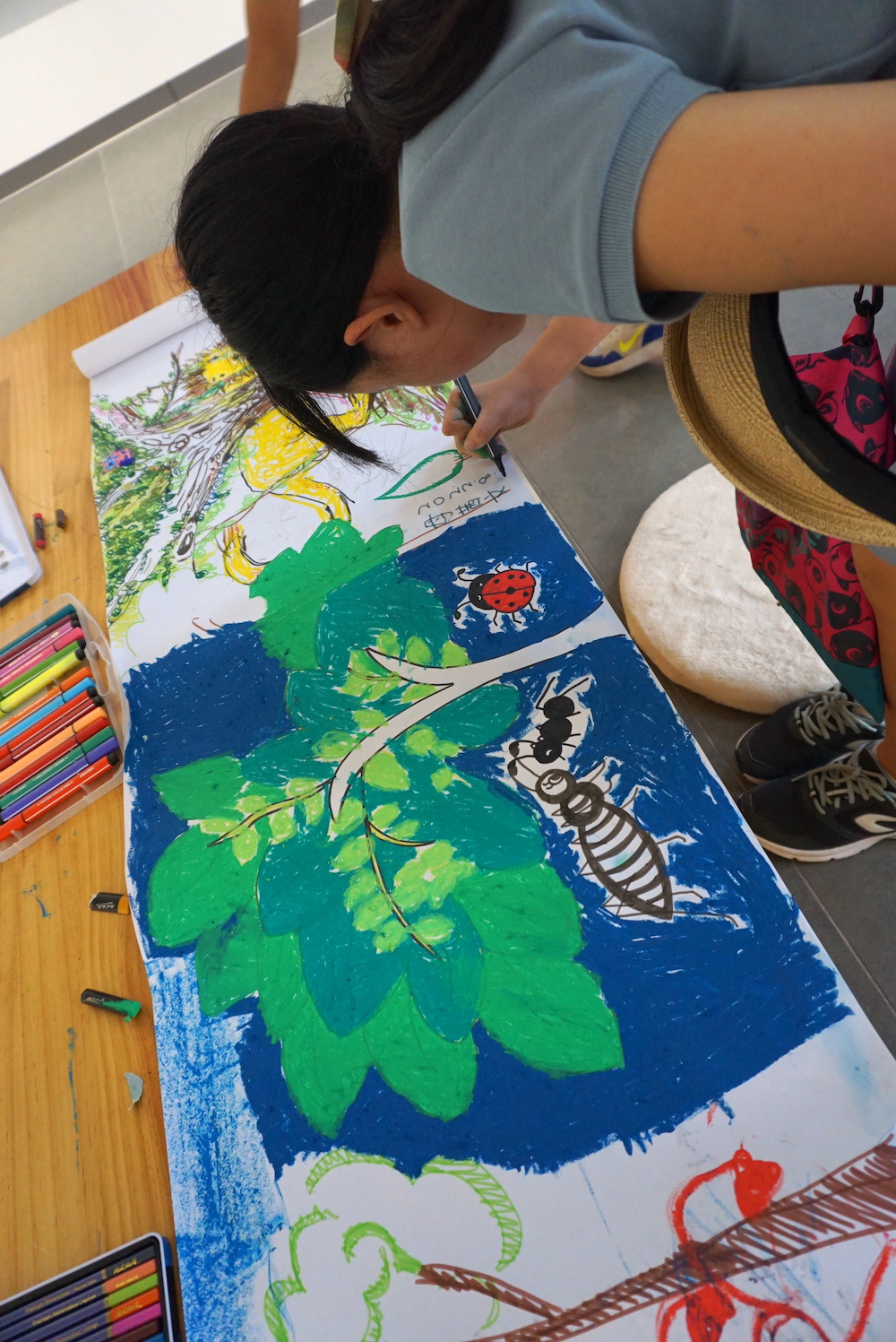 Huge thanks to the organizers of this workshop
Huge thanks to the organizers of this workshop
Little Maupassant Cup International Art Union
and gallerist Peng Chun Hui of FOR 觅 gallery
Because of this workshop, in early October I will go to Changping to plant a number of trees , which I will document in a future blog .
**********************************************
A big thank you to my translators Wang Haoning (Summer) workshop 1 and my son Fionn Cunningham Clifford for workshop 2
Workshop 2 (August 27th ) was a delight with mostly very young learners yet still wonderfully talented
*********************************************
#9 Feeling Good -Tree Song
Click here for 简单中文
Nam’s Tree Song
This was a spontaneous moment on an artist residency last October 2021 in Xishuangbanna, Yunnan .( see ”Rhythm of Life“ blog ) Our group of artists were exploring the largest protected tropical forest in China. We arrived at a giant buttress tree and took a rest and some photos. Dai zu artist Nam broke out into this short song of joy. Accompanying her on beats is fellow Dai zu artist Tie Farong . It only lasted 25 seconds but I was very glad to have been next to her to catch this moment .
Nam is from Xishuuanbanna Yunnan. Her monk name is Ānandī (欢喜 ) meaning happy .
Open Call for your tree story on video
Memory Palace of Trees is socio- ecological art practice which invites your participation to tell a story (or give some kind of information) about trees. It is a social enquiry of how to live better with the planet and with people by sharing tree stories.
Memory Palace of Trees will continue throughout 2022. The submissions are video format. If you have a story you can tell in less than a minute , please find your favorite tree and video yourself on your phone telling the story. I can help with adding the English or Chinese subtitles. Please ensure the sound quality of your recording is clear as possible . If you have any questions about this please ask . Also, If you are in Beijing I can meet up with you and assist in the filming .
Looking forward to hearing from you.I can be contacted directly on this platform.
Video 1: Empty Tendrils by Yvette Stride
Video 2:Pomegranate Tree by Han Chao
Video 3:Trees are Like Humans by Jenny Hong
Video 4:Old Ash A real survivor by Gillian Cussen
Video 5:Tree Rings of Life by Wang Ligeng
Video 6:A very Weird Elf by Zhu Jinghua
Video 7:Old Crabapple of Wenhua Dian by Matthew Hu
Video 8: Standing Fast by Joseph Stewart
Overview of Memory Palace of Tree Stories
月亮之约——夏日展览,通州
《被困的明亮树枝》 蔗糖混合媒材,直径40cm,Niamh Cunningham 倪芙瑞莲 2018
Click Here for English
衷心感谢艺术家/策展人吕美邀请我参加这次五位艺术家共同参与的展览,也十分感谢FOR觅艺术空间主理人庞春慧。非常感谢一同参展的各位艺术家同行陈庆庆、秦秀娟、吕美和张戈。
这是一个令人愉快的下午,在很长一段时间减少出行居家办公之后,很高兴能与这么多新老朋友相谈甚欢。
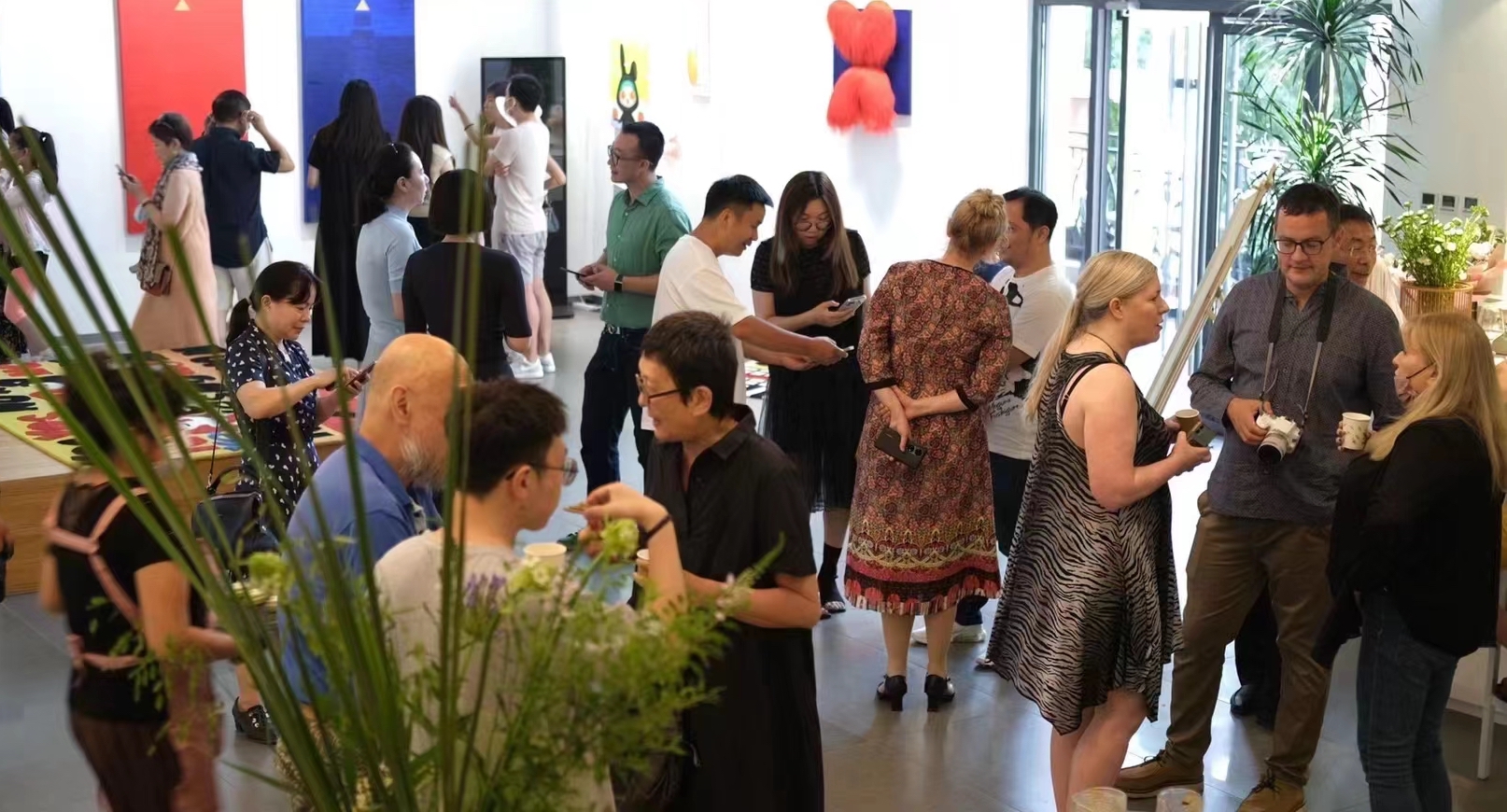
展览概况链接 《月亮之约》
参展艺术家: 陈庆庆,秦秀娟, 吕美, 张戈, 倪芙瑞莲-Niamh
几幅蔗糖系列作品在本次展览中展出.
地球之柱-奥林匹克公园,蔗糖系列 40 x 30cm Niamh Cunningham 倪芙瑞莲 2018
元大都城墙遗址公,蔗糖系列 40 x 30cm Niamh Cunningham 倪芙瑞莲 2018
迷雾露珠——武侯祠 蔗糖系列 100 x 50cm Niamh Cunningham 倪芙瑞莲 2018
蔗糖系列
蔗糖系列作品通过一系列过程和材料的运用,探索失去与改造。在创作过程中对作品画面多次干预,探索材料本身的物理性质如何推动了改变的进程。有些干预如同缝补画面,“烧掉”表面的数字图像,添加色彩,改变的过程当然也包括糖的结晶所产生的影响。艺术家完成了“蔗糖绘画”之后,结晶过程有可能持续使画面发生变化,擦除。画面的自然风景和环境取材于城市中的公园绿地,这些地方强烈地吸引着艺术家(这些地方包括她家附近的奥林匹克森林公园,她曾参加划龙舟训练的后海)。她的作品反映了我们生活中存在的张力,来自于转变和摧毁、建设与解构的过程对我们的塑造。
版纳漩涡 Niamh Cunningham 倪芙·瑞莲 布面丙烯 120x100cm 2021
![]() 版纳林冠 Niamh Cunningham 倪芙·瑞莲 布面丙烯 100x120cm 2021
版纳林冠 Niamh Cunningham 倪芙·瑞莲 布面丙烯 100x120cm 2021
参展作品除了蔗糖系列之外,还有两幅“森林的呼吸”布上绘画,这两件作品是在去年云南西双版纳在地艺术项目中创作的。
本次展览也是装置“种树”首次展出,这是一个社会生态艺术实践,旨在向公众宣传植树并用来支持当地植树项目。展览中使用的海棠树由昌平的北京林学会捐赠。这棵树整个夏季结出的“果实”将捐赠给北京林学会种树项目。
策展人吕美向媒体介绍“种树”
纸做成的树
这棵海棠树由北京林学会捐赠,它所结的“果实”将捐赠给植树项目。树上的叶子是折纸做成,花是用一元人民币纸币做的。
“种树”使用流通中越来越少出现的纸币,以此促进人们对物质世界的觉察。所有物质都有物理持久性,其中一些物质,比如水可以改变其物理状态,变成冰或者蒸汽。就像水一样,实物的现金也具有转化能力,在这个项目中,纸币的物理形态将转化为即将种下的小树苗……在这里,纸用来种树。
更多相关阅读请点击链接 摇钱树的传说
非常感谢通州格拉斯小镇的FOR觅艺术空间。展览将在夏天持续整整两个月。如果您对“种树”工作坊感兴趣请与我联系。
Moon Covenant – Summer exhibition in Tongzhou

A big thank you to artist/curator Mei Lu for inviting me to this five artist exhibition and also to gallerist Hui Peng Chun of For Mi Gallery and to fellow participating artists including Chen Qingqing, Xiujuan Qin, Mei Lu ,Ge Zhang.
It was a really pleasant afternoon connecting with people, old and new friends after a long spell of isolation.

 Link to the overview with details of the five participating artists Moon Covenant Media Link 1
Link to the overview with details of the five participating artists Moon Covenant Media Link 1
Chen QingQing, Xiujuan Qin, Mei Lu, Ge Zhang and Niamh
Several of the sucrose works are exhibited at this venue.
 Pillars of the Earth OP , sucrose series mixed media oval 40 x 30cm Niamh Cunningham 2018
Pillars of the Earth OP , sucrose series mixed media oval 40 x 30cm Niamh Cunningham 2018
Yuan Dadu Relics Park canal , sucrose series mixed media oval 40 x 30cm Niamh Cunningham 2018
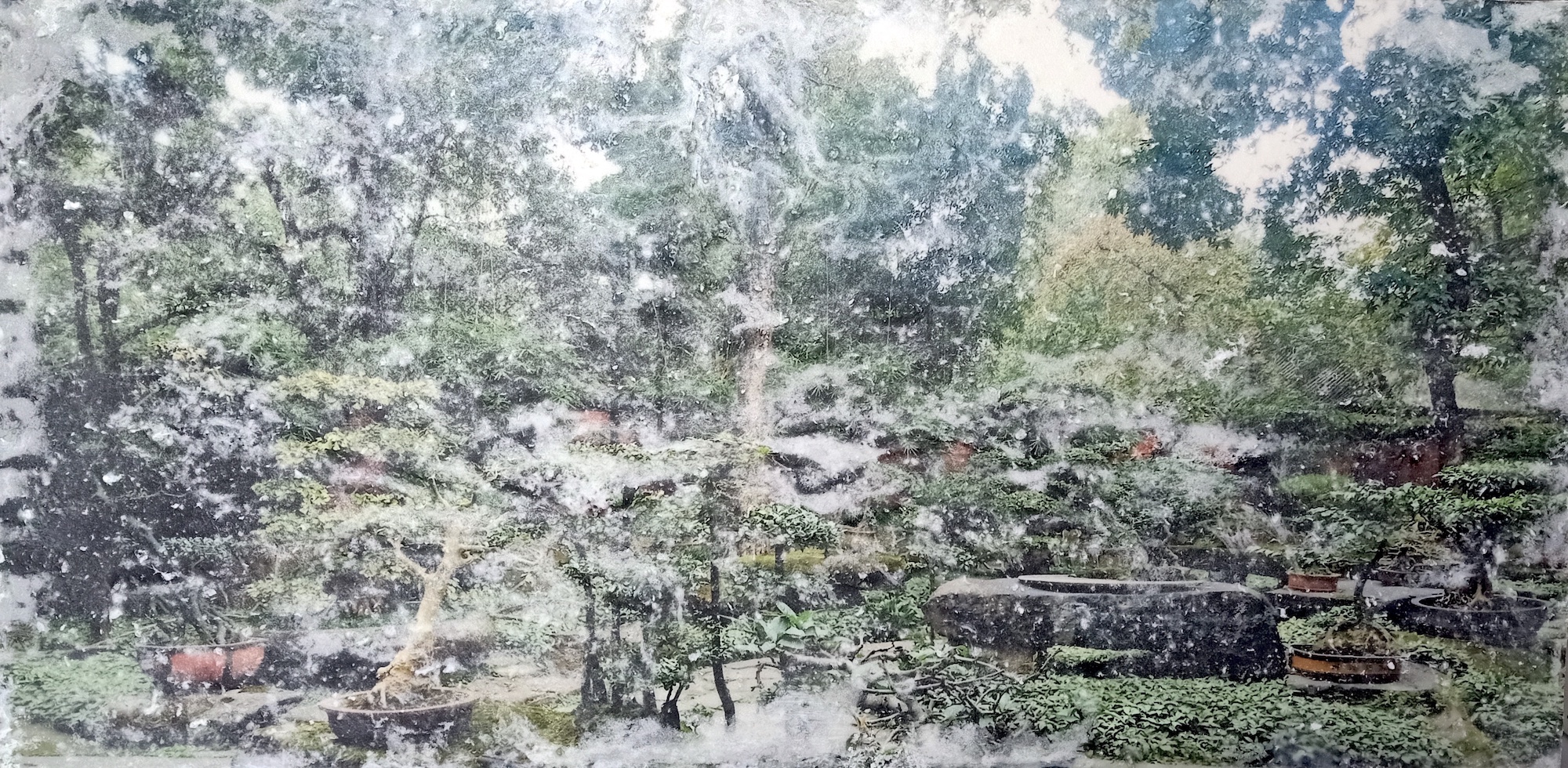 Foggy Dew- Wu Hou Ci. (武侯祠) sucrose series 100 x 50cm Niamh Cunningham 2021
Foggy Dew- Wu Hou Ci. (武侯祠) sucrose series 100 x 50cm Niamh Cunningham 2021
The sucrose series explores loss and reclamation through process and materiality. It involves a sequence of multiple interventions and explores how the physical matter itself can continue to push the creation event. Some of the interventions include sewing, ‘burning off’ the digital image from the surface, adding colour and of course the crystalisation process of sugar. Once the artist has stopped working on ‘sugar painting’ the process of crystalisation may continue to transform and obliterate. The imagery itself is of nature and the environment in urban park areas for which the artist has a strong affinity. (These places include areas around Beijing such as Olympic Park where she lives next door to and Hou Hai where she used to train in dragon boat racing) Her paintings reflect the tensions we experience in lives which are shaped by the processes of transformation and obliteration .
 Banna Vortex Niamh Cunningham 倪芙。瑞莲 acrylic on canvas 100x120cm 2021
Banna Vortex Niamh Cunningham 倪芙。瑞莲 acrylic on canvas 100x120cm 2021
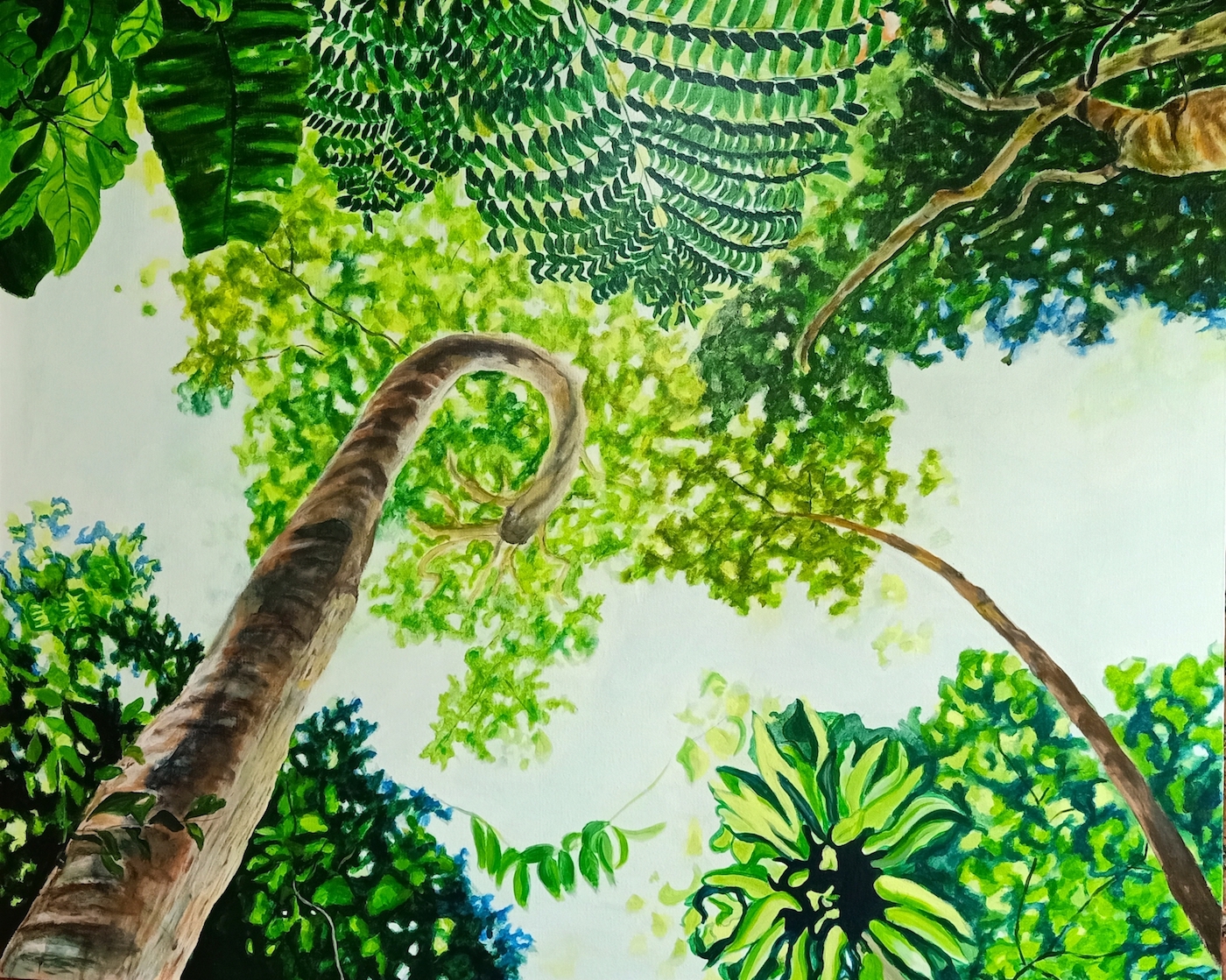
Apart from the Sucrose work there are also two “Forest Breath” paintings on canvas which were made last year during an artist residency in Xishuangbana, Yunnan.
 This exhibition is also the first time to show “Tree Planter” which is a socio eco practice aiming to inform the public and support local tree planting initiatives . The crab apple tree used here was donated by the Beijing Forestry Society in Changping and the “fruits” it yIelds over the Summer will be donated to their tree planting program.
This exhibition is also the first time to show “Tree Planter” which is a socio eco practice aiming to inform the public and support local tree planting initiatives . The crab apple tree used here was donated by the Beijing Forestry Society in Changping and the “fruits” it yIelds over the Summer will be donated to their tree planting program.
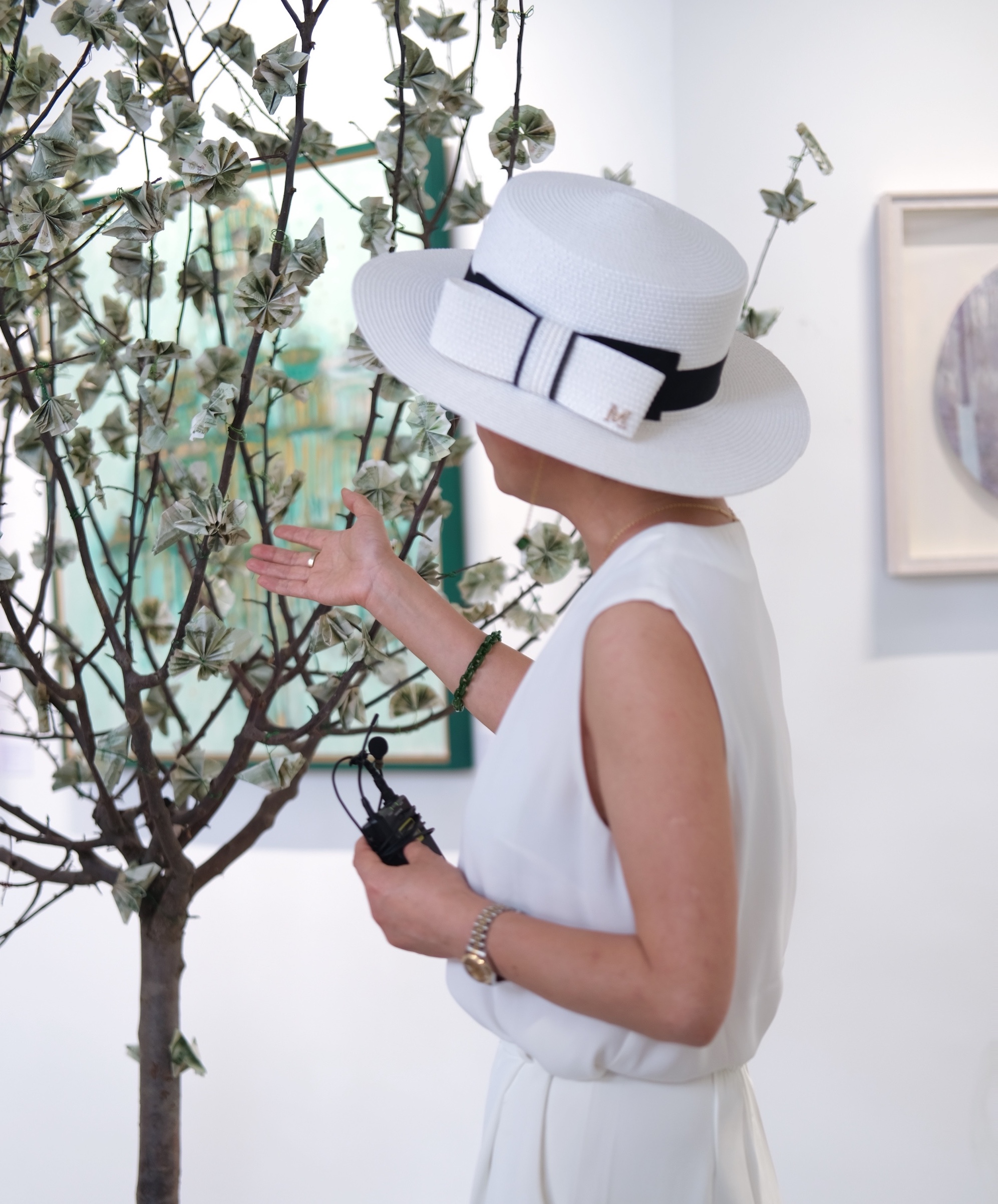 Curator Mei Lu talking about “Tree Planter” to media.
Curator Mei Lu talking about “Tree Planter” to media.
Paper Makes Trees
This Crab Apple Tree was donated by Beijing Forestry Society, the “fruits” that it yields will be donated to tree planting programs. The leaves are made from origami leaves and flowers made of one yuan bills.
Tree Planter uses a bank note that is decreasingly being used in circulation to raise awareness of our material world. All material matter has a physical permanance although some matter such as water can change its state for example to ice or steam . Like water, physical cash also has transformative power and in this case the physicality of paper notes will be transformed into planting new saplings. .. paper is used to grow trees.
Read this link for ancient folklore on money trees.
Many thanks to the gallery “For觅 “ in Grasse Town Tongzhou . The exhibition runs throughout the Summer for another two months. Please contact me if you would like to participate in the Tree Planter workshop.
#6 A very weird elf -Memory Palace of Tree Stories
Memory Palace of Tree Stories on video continues with a story from wood sculptor Zhu Jinghua .
Hello, I am Zhu Jinghua from China. Today, I will share with you a story of tree roots and elves. The trees we usually see are tall canopies, composed of branches, trunks and leaves.
But we overlooked a very important part, the roots of the tree. In order for the tree roots to absorb nutrients, they grow many interesting roots with different textures, shapes, and thicknesses. These roots are organized together, and you will find emerging from this , is a very weird elf.
***************************************************************************************************************************
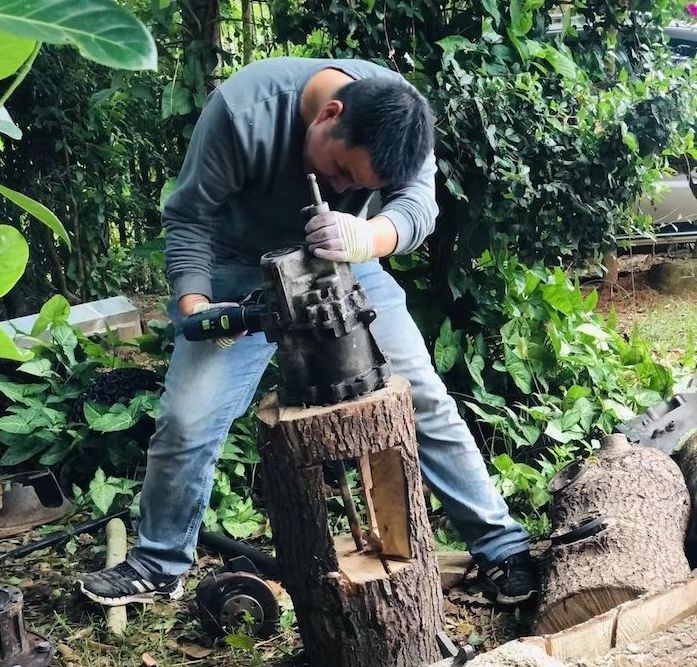 I recently met Zhu Jinghua on an artist residency in Yunnan, yet we both live in Beijing . He is a practitioner and also teaches woodcarving at China Academy of Arts .
I recently met Zhu Jinghua on an artist residency in Yunnan, yet we both live in Beijing . He is a practitioner and also teaches woodcarving at China Academy of Arts .
I had in fact met him briefly two years previously but I was not aware of who he was . We first encountered each other in a very deep nitrate cave behind a waterfall in Sichuan near the town of Shawan . I have even used images of his outline in an artwork and now I know who that figure is.
*************************************************************************************************************************
Open Call for your tree story on video
Memory Palace of Trees is socio- ecological art practice which invites your participation to tell a story (or give some kind of information) about trees. It is a social enquiry of how to live better with the planet and with people by sharing tree stories.
Memory Palace of Trees will continue in 2022. The submissions are video format. If you have a story you can tell in less than a minute , please find your favorite tree and video yourself on your phone telling the story. I can help with adding the English or Chinese subtitles. Please ensure the sound quality of your recording is clear as possible . If you have any questions about this. Also, If you are in Beijing I can meet up with you and assist in the filming .
Looking forward to hearing from you. I can be contacted directly on this platform.


